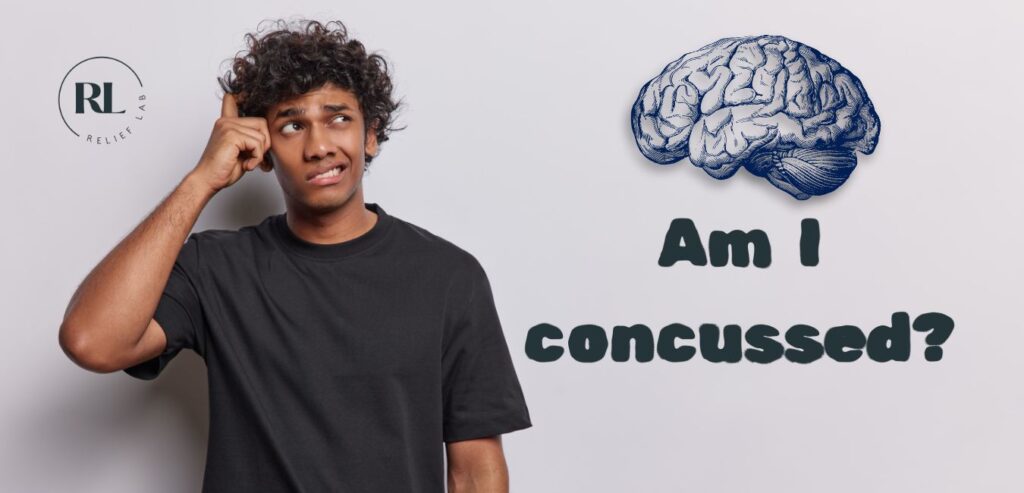Understanding Concussion and Whiplash: What You Need to Know

Are you experiencing symptoms like headaches, neck pain, or dizziness after an accident?
It’s essential to understand the differences between concussion and whiplash to ensure you receive the right treatment. As a leading chiropractor in Kanata, I’m here to guide you through the intricacies of these conditions and provide you with the support you need for optimal recovery.
Concussion vs Whiplash
As a dedicated practitioner in concussion treatment and rehabilitation, I believe it’s vital to clarify the distinction between concussions and whiplash. Take Sarah, for example, a resilient patient with a history of head traumas. After a minor incident, she experienced familiar symptoms like headaches and dizziness. However, a thorough evaluation revealed her symptoms were due to whiplash, not a concussion. This highlights the importance of recognizing the nuances between these conditions.

Sarah’s proactive approach to seeking treatment led to rapid improvement. With targeted interventions, including chiropractic adjustments, rehabilitative exercises, and massage therapy, her symptoms subsided. This case underscores the need for tailored treatment approaches based on the specific mechanism of injury. Concussions involve a rapid acceleration-deceleration of the brain within the skull causing direct trauma to the brain, while whiplash results from similar forces affecting the joints of the neck but to with less force.
As someone passionate about concussion care, I’m committed to providing patients with the knowledge and support needed for effective management. Whether you’ve suffered a head injury or are experiencing symptoms after a minor accident, seeking prompt evaluation and treatment is crucial for optimal recovery and preventing long-term complications.
What is a Concussion?
A concussion is a functional injury to the brain caused by blunt force or impact to the head or torso that causes significant acceleration-deceleration with some rotation of the head. This trauma leads to temporary disruptions in brain function, and is always accompanied by damage to the neck. Symptoms can vary widely, including headaches, sensitivity to light and noise, dizziness, memory issues, and emotional changes. It’s crucial to seek prompt evaluation and treatment from a trained specialist to address these symptoms effectively.


What is Whiplash?
Whiplash-associated disorder (WAD) shares many symptoms with a concussion and can be triggered by accidents also involving a sudden acceleration-deceleration forces. Unlike a concussion, whiplash is graded based on the severity of symptoms, ranging from mild neck pain to neurological signs or fractures. Regardless of the grade, seeking timely assessment by a healthcare professional is essential to prevent long-term complications.
Why Do I Get Symptoms?
Understanding the underlying mechanisms of symptoms is key to effective treatment. Decreased blood flow to the brain, cellular disturbances, hormonal imbalances, and visual/vestibular dysfunction are among the factors contributing to symptom development. By addressing these factors through a comprehensive treatment approach, including chiropractic care, dietary changes, hydration, exercise, supplements, sleep optimization, and cranial acupressure, we can promote healing and recovery.
Biggest Mistakes To Avoid
Avoiding treatment, relying on a single opinion, neglecting healthy eating habits, fearing activity, and adopting a defeatist mindset are common pitfalls to avoid. Instead, take proactive steps to address your symptoms and prioritize your well-being.
Where Should I Start?
Begin by seeking a thorough evaluation from a trained specialist, such as a chiropractor, who can perform simple tests to assess your condition. Movement, exercise, cognitive tasks, and visual/balance movements play a crucial role in recovery, along with chiropractic adjustments to reduce neck joint restrictions and increase blood flow to the brain.

The Plan
Implementing a holistic approach to treatment, including dietary changes, hydration, exercise, supplements, and sleep optimization, can significantly improve your symptoms and overall well-being. By addressing the root causes of your symptoms, we can work together to achieve lasting relief and restore your quality of life.
Get started on your recovery with these exercises
Don’t let concussion or whiplash symptoms hold you back. As your trusted chiropractor in Kanata, I’m here to support you every step of the way on your journey to recovery. Contact us today to schedule your consultation and take the first step towards a healthier, happier you!
